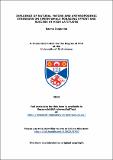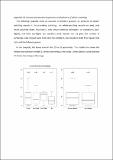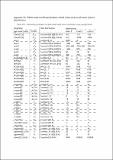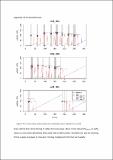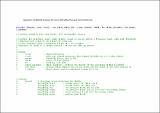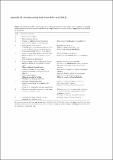Files in this item
Influence of natural factors and anthropogenic stressors on sperm whale foraging effort and success at high latitudes
Item metadata
| dc.contributor.advisor | Miller, Patrick | |
| dc.contributor.author | Isojunno, Saana | |
| dc.coverage.spatial | 255 | en_US |
| dc.date.accessioned | 2015-06-05T11:14:08Z | |
| dc.date.available | 2015-06-05T11:14:08Z | |
| dc.date.issued | 2015-06 | |
| dc.identifier.uri | https://hdl.handle.net/10023/6760 | |
| dc.description.abstract | Behavioural responses can reveal important fitness trade-offs and ecological traps in evolutionarily novel contexts created by anthropogenic stimuli, and are of increasing conservation concern due to possible links to population-level impacts. This thesis illustrates the use of proxies for energy acquisition and expenditure within multivariate and state-based modelling approaches to quantify the relative time and energetic costs of behavioural disturbance for a deep-diving marine mammal (Physeter macrocephalus) in foraging grounds in Kaikoura Canyon (New Zealand) and near Lofoten Islands (Norway). A conceptual framework is first developed to identify and explore links between individual motivation, condition and external constraints to behavioural disturbance [Chapter 1]. The following chapters then use data from behavioural response studies (BRS) to: 1) derive biologically relevant metrics of behaviour [all chapters], 2) investigate effects of boat-based focal follows and tagging procedures [Chapters 2-3], and 3) relate responses to specific disturbance stimuli (distance, approach, noise) from whale-watching [Chapter 2], naval sonar and playback of presumed natural predator (killer whale Orcinus orca) sounds [Chapter 4]. A novel hidden state model was developed to estimate behavioural budgets of tagged sperm whales from multiple streams of biologging (DTAG) data [Chapter 3]. Sperm whales traded off time spent at foraging depths in a non-foraging and non-resting state in response to both tag boat presence, 1-2 kHz naval sonar (SPL 131-165 rms re 1μPa) and mammal-eating killer whale sound playbacks, indicating that parallel non-lethal costs were incurred in both anthropogenic disturbance and presumed antipredatory contexts. While behavioural responses were highly variable by individual, biologically informed state-based models appeared effective to control for variability in energy proxies across different functional contexts. These results and Chapter 5 “linking buzzes to prey” demonstrate that behavioural context is a signal that can aid understanding of how individual non-lethal disturbance responses can impact fitness. | en_US |
| dc.language.iso | en | en_US |
| dc.publisher | University of St Andrews | |
| dc.subject | Physeter macrocephalus | en_US |
| dc.subject | Cetacea | en_US |
| dc.subject | Behavioural disturbance | en_US |
| dc.subject | Behavioural response studies | en_US |
| dc.subject | Whale-watching | en_US |
| dc.subject | Naval sonar | en_US |
| dc.subject | Risk-disturbance hypothesis | en_US |
| dc.subject | Functional state | en_US |
| dc.subject | State-switching model | en_US |
| dc.subject | Time-series model | en_US |
| dc.subject.lcc | QL737.C435I8 | |
| dc.subject.lcsh | Sperm whale | en_US |
| dc.subject.lcsh | Cetacea | en_US |
| dc.subject.lcsh | Whales--Behavior | en_US |
| dc.subject.lcsh | Whale watching | en_US |
| dc.subject.lcsh | Sonar | en_US |
| dc.title | Influence of natural factors and anthropogenic stressors on sperm whale foraging effort and success at high latitudes | en_US |
| dc.type | Thesis | en_US |
| dc.type.qualificationlevel | Doctoral | en_US |
| dc.type.qualificationname | PhD Doctor of Philosophy | en_US |
| dc.publisher.institution | The University of St Andrews | en_US |
| dc.publisher.department | Sea Mammal Research Unit | en_US |
This item appears in the following Collection(s)
Items in the St Andrews Research Repository are protected by copyright, with all rights reserved, unless otherwise indicated.

